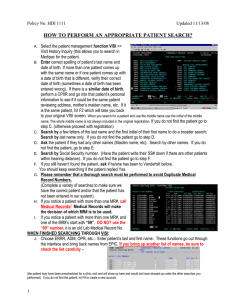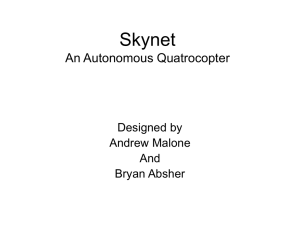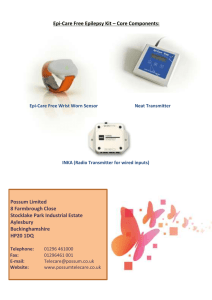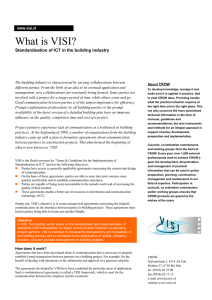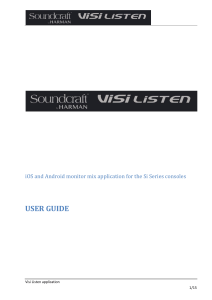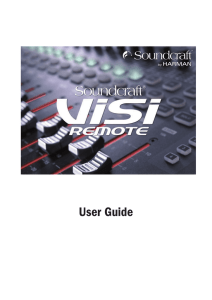TCSP-7: Patent Liability Analysis
advertisement
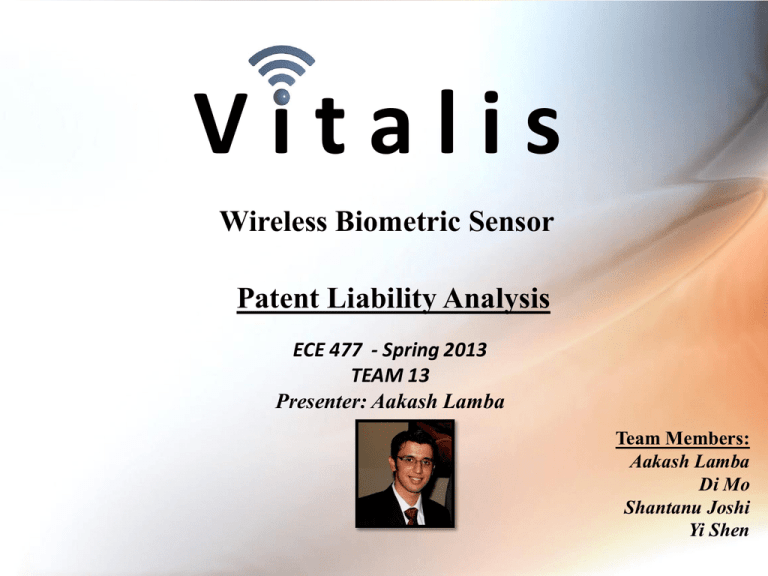
Vitalis Wireless Biometric Sensor Patent Liability Analysis ECE 477 - Spring 2013 TEAM 13 Presenter: Aakash Lamba Team Members: Aakash Lamba Di Mo Shantanu Joshi Yi Shen Project Abstract • Prototype of a portable wireless biometric sensor • Battery-powered device with fuel gauge • Mounted on the wrist • Monitor vital signs such as pulse rate, SpO2 and skin temperature • Transmit the information via Wi-Fi for remote web access • NFC chip allows immediate access • Accelerometer on the shoulder for fall detection • Manual and automatic alarm system. Our Design Accelerometer Wi-Fi chip Alarm button OLED Battery Sp02 sensor Existing patents Liability analysis (6,102,856) • The device in the patent is portable, however unlike our product which is wrist mounted, this device is worn around the chest and all sensors are in contact with skin(claim 11). • Alarm system detects anomalous conditions on device, contacts attendant who based on the condition requests help for the patient. All the communication here happens over cell phone network (claim 14). Our device however operates over wi-fi (since it’s meant for operation in a hospital setting) and produces alarms automatically i.e. no attendant required • Anomalous data is identified on the device itself which sends message through phone call(claim 1), while our alarms are generated on device and are sent to web server, which subsequently sends alerts through software via either email or VOIP (to primary care provider). Alert is also sent of device itself (i.e. display flashes). Liability analysis (6,314,058 B1) • Our design infringes the form factor under the doctrine of equivalents since the device like ours is a wrist mounted health monitor(claim1). • However, our packaging is very different. The pulse sensors in the patented product are underneath the rubber strap by which the device is mounted. Our pulse sensor is located on the users finger. • Also, the patented device uses sound to measure beats. We utilize an optical sensor to gauge changes in Spo2 to measure pulse. Similar products ViSi Mobile health monitor - Worn around the wrist; supported by a band Touch screen UI Small and discrete. Only respiration rate sensor is placed on user’s chest Aesthetically pleasing There patents for this product are still pending The company that makes the ViSi health monitor, Sotera Wireless Inc. has issued the following patent applications related to their health monitor: Body-worn vital sign monitor (#1) Alarm system that processes both motion and vital signs using specific heuristic rules and thresholds (#2) Liability analysis • Abstract: A body-worn vital sign monitor that measures a patient’s vital signs while simultaneously characterizing their activity state. • Our device does infringe on the form factor of the ViSi mobile health monitor (under the doctrine of equivalents). That being said the idea of mounting of a device on one’s wrist, like a wrist watch is not a novel one. • The ViSi monitor transmits wirelessly using P2P communication and over 802.11 network protocols which is basically wifi. We also plan to use wifi to wirelessy send data to an online server. • However, the difference lies in the fact that the ViSi operates completely within the hospital network (locally), while our server is hosted on the web which means that patient records can be accessed even when a patient’s caretaker is far away. The only commonality in the two design is wifi which is something that Sotera cannot patent. Liability analysis • Sensor locations: Sensor ViSi Our device Accelerometer 3 different sensors for One accelerometer x,y and z mounted on for fall detection on device, on arm and shoulder cable Temperature Chest Wrist (under device) Sp02 Thumb Index finger • Also, the user generated alarm is through the touchscreen UI, while we use a physical button on our device • Since Sotera’s patents are still pending, technically, we are not infringing intellectual property.
